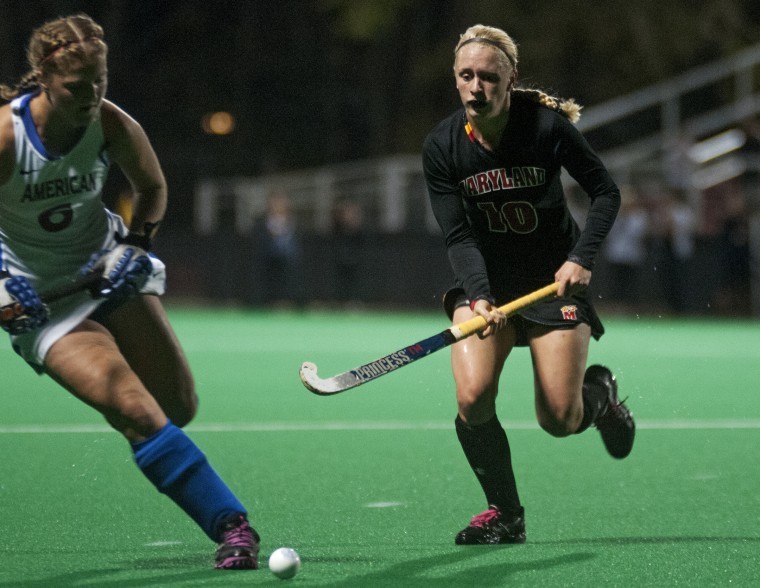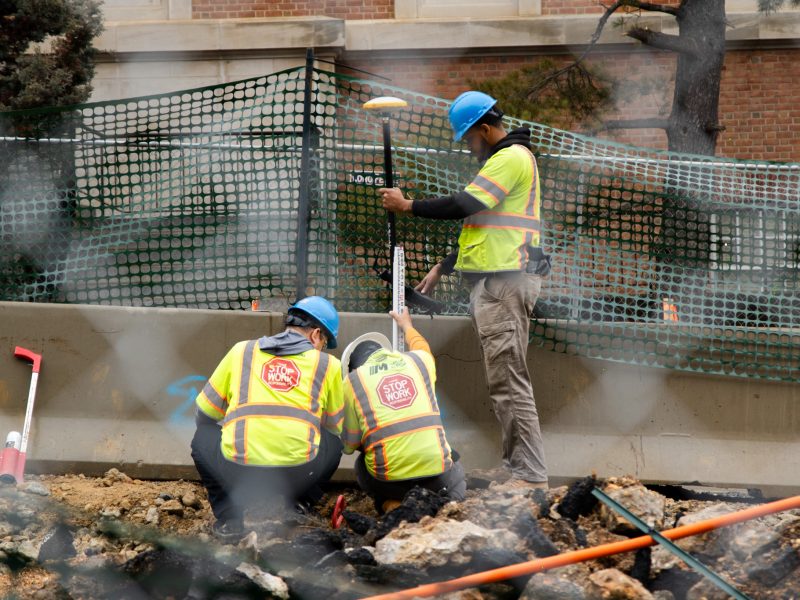
Jill Witmer
When Jill Witmer sees a chance to take the ball into open space, she often does it with a quick burst. Her cleats blur as she gains speed, and opposing defenses struggle to stop her as she moves upfield.
Witmer’s athleticism is part of what has made the Terrapins field hockey forward and three-time National Field Hockey Coaches Association All-American one of the nation’s biggest attacking threats in her career with the Terps. Against then-No. 7 Duke on Saturday, however, Witmer played the entire game in the midfield.
“Have I ever played mid?” Witmer said. “Rarely, very rarely. But I like it.”
The Lancaster, Pa., native’s past stretches at midfield this season have been short, but she was still effective during the course of the No. 1 Terps’ 5-1 win against the Blue Devils. Entering today’s ACC tournament rematch against Duke in Chestnut Hill, Mass., the Terps now know Witmer can make an impact in other parts of the field, if need be.
Though her role on the offense is different, the same things that make Witmer effective at forward help her in the midfield, coach Missy Meharg said. Elusive when in control of the ball, she can exploit mismatches and dribble past defenders to create scoring opportunities.
“She’s really become a predominant midfielder for us,” Meharg said. “I look at her now and wonder if, at the next level or internationally, she’ll eventually grow into being a midfield as well.”
In the midfield, Witmer receives the ball with only one player marking her, a contrast from the two-on-one scenarios she often faces as a forward. With less opponents to beat and passing options up field, she can break through the midfield, pass to teammates and then make runs into the attacking third.
Witmer played in all areas of the midfield when the Terps faced Duke, as her new role gave her more chances to influence the game. Her speed and skill helped initiate the Terps’ attack, which drew seven penalty corners in the game.
Playing in the midfield, however, also gives Witmer defensive duties, something she has had to take into account despite her offensive tendencies. But she said she enjoys the additional responsibility, as it gives her more freedom to move throughout different areas of the field.
“I feel like I can do more,” Witmer said. “I’m a little not used to it, going in our defensive end, so it’s a little scary. But I think I’m getting better and it helps that I’m practicing that.”
This isn’t the first time Meharg has placed the team’s established players in different positions. Starting defender Sarah Sprink played midfielder more often as the season progressed, and midfielder Delaney Leathers has played as a defender at times. Katie Gerzabek, who scored 10 goals as a forward last year, has spent this season in the midfield.
The Terps’ versatile roster has allowed them to play the variety of styles they have used this season. Entering the postseason, the team continues to tinker with its lineup, finding more players who can thrive in different positions and adding to the lineup’s unpredictability.
“It’s hard to prepare for that,” defender Ali McEvoy said. “It’s hard to prepare, ‘Oh, what if she’s here? What if she’s there?’ So having that flexibility to play any part or any system is a really big strength of ours.”
Witmer is the latest example of the Terps’ versatility. Now Duke will need to prepare for the danger she presents as a midfielder.
The Terps’ future postseason opponents will have the same challenge. In the midfield, Witmer can still use her pace to cut through defenders and craft chances. But she can also use it to prevent opposing attacks and help the Terps’ defense. Witmer now knows more about how she can affect a game, giving the team a choice of where to play her.
“I love them both,” Witmer said. “I think I like mid. But I like forward, too. I can’t pick.”



